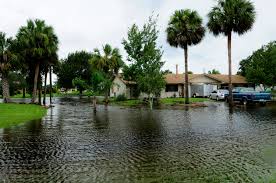Floods are widespread nationally, and homebuyers need to understand the threat flooding poses to their investment, as well as their safety, Realtors were told at the National Association of Realtors (NAR) Conference & Expo last week in Orlando.
“Every building you will be working with has a need to be protected,” said Melanie M. Graham of H2O Partners, reminding Realtors that all property owners have the option to purchase flood insurance — not simply those in high-risk areas. In many cases, she added, coverage is relatively affordable.
Floods in lower risk zones are fairly common, according to Graham. She said 20 percent of National Flood Insurance Program (NFIP) claims occur in low- to moderate-risk zones, but those properties receive one third of overall flood disaster assistance.
Also, she said, a disaster declaration alone might not result in a payout for property owners. Instead, having a flood insurance policy in hand is critical to protecting property owners when disaster strikes.
Maria Wells, chairman of NAR’s Insurance Committee and Florida Realtors 2016 president-elect, reminded Realtors about their role in educating clients about flood risk to their property. Wells suggested Realtors find a good insurance agent they trust and get to know their state floodplain manager so they have a place to ask questions.
“When we’re working with our buyers, it’s important to inform them of the devastation that can occur if they aren’t covered,” Wells said, adding buyers in low- and moderate-risk areas who don’t take out flood insurance are making “a really big mistake with what we know now.”
NAR has been politically active in flood insurance talks and supports a range of policy solutions to ensure access to affordable flood insurance. Among them, NAR supports an extension of the NFIP before it expires in September 2017, as well as mitigation efforts that protect homeowners before a flood strikes. Earlier this year, NAR also supported House-passed legislation that would allow homeowners to move seamlessly between the NFIP and private insurance markets without the risk of an arbitrary rate increase.






